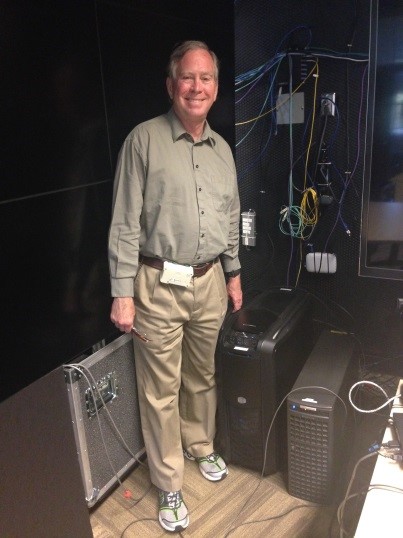FIONA: Innovative Network Appliance for Big Data
Networking and Expertise Help Make FIONA a Star for Collaborative Success
San Diego, May 27, 2014 -- The good news is that with the Prism@UCSD NSF grant, most UC San Diego labs can have a dedicated optical-fiber network connection 1,000 times faster than the shared Internet. The bad news, however, is that those same labs will now be inundated with 1,000 times as much data pouring into their labs every second. This challenge has led to an innovative solution — a "Big Data" networked PC device called the Flash I/O Network Appliance (FIONA), which has been carefully engineered to handle these huge data flows.
|
"FIONA was designed," said Papadopoulos, "to resolve the real network problem for big data."
FIONA has enabled researchers, including Dr. Falko Kuester, who want to visualize big data from distributed locations using the latest virtual environment called Wide Angle Virtual Environment (WAVE). The WAVE requires billions of pixels to be rendered every second to create a realistic 3D virtual environment. When it was first designed, the WAVE drew data from file servers via the 10 gigabits per second (Gbps) campus network. However, the image rendering and updates were still not smooth enough and appeared "jerky" at times.
DeFanti, co-PI with Kuester on the WAVE project, and Papadopoulos, PI of the Prism@UCSD project, came up with an idea to build an inexpensive, low-power, low-noise appliance that includes a lot of flash drives, local disk drives, and powerful graphic processing units (GPUs). These appliances can then plug into 40Gbps networks and drive the display walls directly. FIONA was created as a box that can drive the displays, fetch data over the network, and cache necessary data locally. With help from UC San Diego's Research Cyberinfrastructure (RCI) group in optimizing the networking connection and system configuration, FIONA takes care of moving the data and local caching, and it works seamlessly with rendering algorithms for visualization on the WAVE, making virtual-reality research simpler, better and faster.
"With the help from RCI," said the Qualcomm Institute's DeFanti, "we can put FIONA boxes on the Prism@UCSD network at 40 Gigabits per second."
The Prism@UCSD network is a "big data freeway" funded by the National Science Foundation (NSF). RCI provides fiber for the Prism@UCSD network at 40 Gbps.
FIONA is just one type of endpoint on the network, and WAVE is another. Other types include big computing and storage clusters at the San Diego Supercomputer Center (SDSC) and elsewhere on campus.
|
While FIONA is technically for everyone, in addition to the appropriate hardware, it also requires competent system operators to configure and manage properly. It is currently an experimental service, but DeFanti and Papadopoulos foresee UC San Diego researchers adopting FIONAs in production in the near future. Ideally, researchers would just acquire the FIONA box like any PC and then their research can benefit from the high-performance network more easily.
UC San Diego is among the few universities in the country to have a 40 Gbps network backbone, and it’s not stopping there. In 2015 the plan is to have a 100 Gbps connection completed under the Configurable, High-speed, Extensible Research Bandwidth (CHERuB) project, with SDSC Director Michael Norman as PI. DeFanti is confident that the campus big-data experience will be much improved with the continuation of RCI efforts, and FIONA will become one important and ubiquitous device to be found in practically every research lab on campus.
The work on FIONA is funded in part by the NSF Center for Integrated Access Networks (CIAN) under PI and Deputy Director Shaya Fainman) and the NSF IRNC award (with Tom DeFanti as PI).
Related Links
FIONA
Prism@UCSD
Research Cyberinfrastructure (RCI)
WAVE
CHERuB
CIAN
SDSC
Calit2's Qualcomm Institute
Media Contacts
Doug Ramsey, 858-822-5825, dramsey@ucsd.edu



